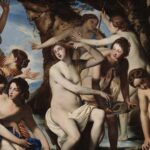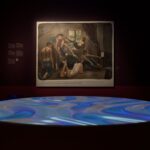Unique forms in the continuity of space might be Umberto Boccioni‘s most famous artwork, which has become a symbol of Italian Futurism .
The artwork, whose original plaster version is on display at the Museum of Contemporary Art in São Paulo, Brazil, has been the subject of several replicas made in bronze.
One of these, dated 1949, is at the Museum of ‘900 in Milan.
Umberto Boccioni and the Futurism
Umberto Boccioni was born in Reggio Calabria in 1882.
Boccioni was an Italian painter, sculptor and writer, a leading exponent of Futurism.
Futurism is an artistic current that emerged in the early decades of the 20th century and, in its manifesto, celebrated speed and dynamism in art.
The idea of visually representing movement and itsresearch into the relationships between object and space influenced the fortunes of 20th-century painting and sculpture.
Unique forms in the continuity of space: man as a cog
Thework, when viewed from the side, depicts the figure of a man walking, but looking more carefully, it is easy to think more of a machine, a moving cog than a person.
The artwork, which is designed to become an aerodynamic body, is developed with cavities, reliefs, solids and voids that generate a discontinuous effect, in which there is a shift from light to shadow.
Basically, the forms change and shape according to the angle from which you look.

Looking at the figure from the right, the torso appears to be full but if you turn around the statue and look at it from the left, it turns into a hollow cavity.
The contour line is developed as a sequence of curves now concave, now convex: thus the irregular contours do not limit the figure as usual but dilate it by expanding it in space.
When viewed from the side, the statue gives the impression of an advancing movement that proceeds vigorously.
However, if you look at it from the front or from a three-quarter view, you can see a twisting of the forms in space: more than one line wraps around the figure in a spiral motion, involving the different planes in a rotation that suggests a further expansion of the forms.














